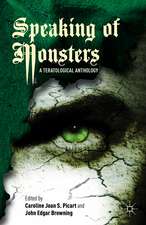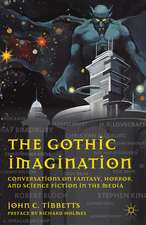Urban Film and Everyday Practice: Bridging Divisions in Johannesburg: Screening Spaces
Autor Alexandra Parkeren Limba Engleză Hardback – 21 iun 2016
Preț: 388.72 lei
Nou
Puncte Express: 583
Preț estimativ în valută:
74.41€ • 80.85$ • 62.54£
74.41€ • 80.85$ • 62.54£
Carte tipărită la comandă
Livrare economică 21 aprilie-05 mai
Preluare comenzi: 021 569.72.76
Specificații
ISBN-13: 9781137554796
ISBN-10: 1137554797
Pagini: 282
Ilustrații: XI, 242 p. 18 illus., 3 illus. in color.
Dimensiuni: 148 x 210 x 20 mm
Greutate: 0.43 kg
Ediția:1st ed. 2016
Editura: Palgrave Macmillan US
Colecția Palgrave Macmillan
Seria Screening Spaces
Locul publicării:New York, United States
ISBN-10: 1137554797
Pagini: 282
Ilustrații: XI, 242 p. 18 illus., 3 illus. in color.
Dimensiuni: 148 x 210 x 20 mm
Greutate: 0.43 kg
Ediția:1st ed. 2016
Editura: Palgrave Macmillan US
Colecția Palgrave Macmillan
Seria Screening Spaces
Locul publicării:New York, United States
Cuprins
1 Film in Divided Cities.- 2 Johannesburg the Divided city.- 3 Physical Materiality and Imageability.- 4 Identity.- 5 Mobility.- 6 Crime and the Tsotsi.- 7 The Influence of Film.- Annexure: Method.
Notă biografică
Alexandra Parker is a postdoctoral research fellow at the University of the Witwatersrand, South Africa. She teaches first year courses in the Wits School of Architecture and Planning, South Africa. She serves on the Johannesburg Heritage Foundation board, actively campaigning to save the city’s heritage.
Textul de pe ultima copertă
This book explores the ways in which films of Johannesburg assist residents of the city to bridge the divisions and inequalities of contemporary urban space through the four lenses of materiality, identity, mobility, and crime. Films influence the everyday practices of urban residents and contribute to their knowledge of the city. Urban Film and Everyday Practice examines the relationship between the city, and its representations through the four themes, to deconstruct the complexity of the city and to understand the complicated nature of residents’ interactions with urban space. Johannesburg serves as a case study for examining the divisions and inequalities that cities around the globe are currently facing.
Caracteristici
Explores the ways in which films of Johannesburg assist residents of the city to bridge the divisions and inequalities of contemporary urban space Examines the relationship between Johannesburg and materiality, identity, mobility, and crime to deconstruct the complexity of the city and to understand the complicated nature of residents’ interactions with the city Delves into the reception of Johannesburg urban films in the environments of their locations and narratives

















